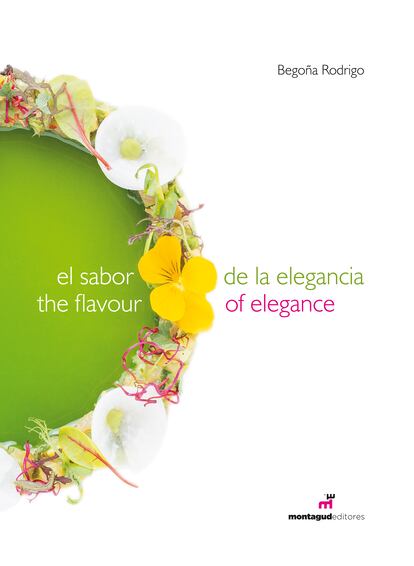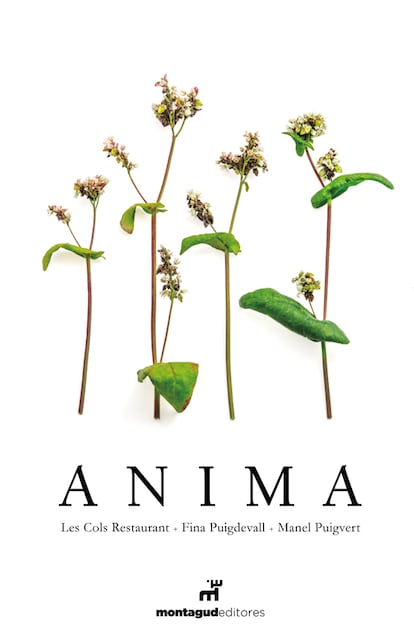The Book Fair is coming and one of the best-selling gastronomy books is still the 1080 Cooking Recipes by Simone Ortega (Editorial Alliance). Young people buy it wrapped in that nostalgia that permeates childhood “it was the book my grandmother had in the kitchen” and mothers rescue it from the shelf to give it to their children, dreaming that one day they will become independent and learn to cook. Together with Simone Ortega, the book of the Marquise de Parabere (The Complete Kitchen) is another classic [se puede llamar así a un libro con más de 70 años de existencia] republished in 2022 by the Espasa-Calpe publishing house. Both books are traditional cooking recipe books, designed and written by women. But beyond these, if we talk about ‘lifetime recipes’, the top sales, let’s not fool ourselves, they are still the books of Karlos Arguiñano [en plural, porque novedad que saca, novedad que se coloca entre los más vendidos de no ficción].
If we look for books written by women or that tell us the story of the most important women in the world of gastronomy, the result will be: some small books on traditional cooking, a few on home baking, several essays and books on culinary narratives, and, what’s more, books on nutrition, lifestyle and, in the last two years, manuals to get the most out of your air fryer. These last writings, for the most part, by the influencers Fashion. We have toured the bookstores in Madrid. Specialized and generalists. We have gone to the cooking sections and we have found a reality: 80% of the books published in 2023 (removing those from the influencers) are written by men, there are few that talk about women in gastronomy and few copies that show the cuisine of women in fine dining. Once again, we have to ask ourselves, what about women? They neither write nor cook.
In the sections of great chefs there are only three books with a woman’s signature and story. One, the beautiful book by Carme Ruscalleda, edited by Planeta Gastro, co-written with the journalist Rosa Rivas, and illustrated by the photographer Carles Allende: Happiness. Although Ruscalleda has published several books in recent years, the last The Frying Pan by the Handle, a seasonal cooking manual, easy and very useful; For the first time, the chef decided to tell her story. Before definitively closing her restaurant in Sant Pau (with three Michelin Stars) she decided to scratch her memory, outline her life and tell it in a natural and spontaneous way, as she is. But, the book is not the typical manual that chefs make to show off their kitchen and person. No. In these pages you will find a piece of the history of gastronomy of the last 30 years narrated in the first person, you will understand what the Mediterranean diet means, what local cuisine is… Without a doubt, a great book that has gone unnoticed and that, However, it should be among the jewels in our library.

Next to Ruscalleda’s, we find one of the few remaining copies of Begoña Rodrigo’s last book, The Taste of Elegance (Montagud Editors). Yes, it is true that the first book by the La Salita cook was a recipe book, edited by Temas de Hoy, which was published following her victory in the program Top Chef: Begoña Rodrigo’s recipes (today discontinued). From that opportunistic recipe book to the truth of one of the most respected and applauded cooks in our country. The Taste of Elegance It is a voluminous, hardcover book, an exhibition manual, with beautiful illustrations and clean photographs, in which you will find the truth about this cook, her first steps in the kitchen and the start of her restaurant, today, a reference in Valencia . As with Ruscalleda’s, this book is also a reflection and a generous delivery of the dishes that have managed to crown this cook as one of the most important voices of gastronomy in our country.
Fina Puigdevall did something similar with her book Animate. For those who don’t know her, which I hope are few, she runs the restaurant Les Cols de Olot (Girona). A family farmhouse converted into one of the great temples of gastronomy in Spain. Her book, also edited by Montagud, with more than 380 pages, bible format, voluminous and uncomfortable, contains Fina’s reflection, philosophy and way of understanding cooking. Honestly, it is not a commercial book nor do I think that was the publisher’s intention, but it is not an easy book to read either. However, if the intention is to make a library that tells us about women in gastronomy, this is a must.

But to know who is who in gastronomy, you have to go to the essay section and get two other copies, both written by men: They are Chefs. The Great L
adies of Contemporary Cuisine and their best recipes (Nerea Editorial) written by Gilles Pudlowski. A beautiful illustrated book that covers the life and cuisine of 36 of the kitchens that have revolutionized the culinary panorama of Europe. Among them, two Spaniards: Elena Arzak and Carme Ruscalleda. Without a doubt, if you want to know who the women were who 20 years ago were already raising their voices in the kitchen, you have to get this copy and also the latest publication by the historian and journalist Óscar Caballero, Women in Gastronomy, edited by RBA. The author’s fine pen masterfully chisels the profiles of the great ladies of cuisine, from the first woman to obtain a Michelin star to those who today are the pillars of world haute cuisine. An essay, at times thoughtful, at others, light and anecdotal, that asks us uncomfortable questions such as: Give birth to dishes or cook children? And who strives to give names and surnames to those mothers that the great chefs (men) mention so much, and does not forget those who have made gastronomy today an indisputable part of the culture of a country, read: those already mentioned Elena Arzak, Carme Ruscalleda or Fina Puigdevall, Reine Sammut, Flora Mikula, Virgine Basselot or Andrée Rosier, among others.

“A thousand reasons have been sought to explain the absence of women in fine dining,” writes Oscar Caballero in his book. One, evident and general, is that same absence at the top, in other sectors of society (…) But if we try to particularize, the reasons why women have little presence in the kitchen vary with the times. The heaviness of the material in public kitchens, the machismo of the sector, the lack of separate changing rooms, in gastronomic restaurants are recurrent. Without forgetting the military aura of the kitchen team that Auguste Escoffier codified, not in vain called the ‘brigade’. And whose hierarchical and somewhat routine structure was an anticipation of the industry’s assembly line. A world forged by men. For men. And in which there would consequently be no mental space for women (…)”
#cook #write #women #invisible #cookbooks